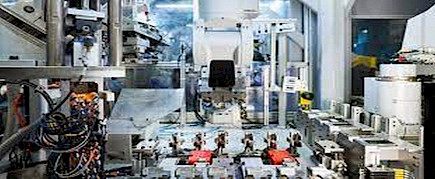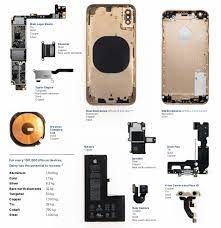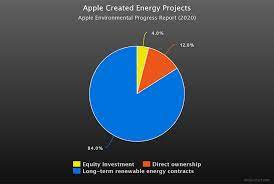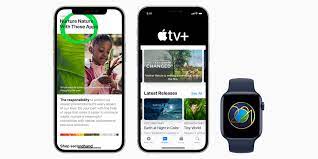
Apple has released new information regarding the growing recycling of its content across its products.
The company introduced certified recycled gold for the first time and has more than doubled its recycling of tungsten, rare earth elements, and cobalt.
In 2021, recycled materials accounted for approximately 20% of the substances used in Apple devices. This is the most recycled use ever.
The News:
Apple has announced several eco-friendly initiatives, including the recycling of materials used in its products.
In addition to the fact that it has begun to make use of recycled gold in the very first instance, Apple has more than tripled its use of tungsten that has been recycled into rare earth elements, cobalt, and tungsten carbide, according to the company. By 2021, recycled components accounted for nearly 20% of all components used in Apple products.

This is the highest it's ever been. In 2017, 59% of the aluminum used in Apple products was recycled from sources, with some items containing 100% recycled materials in the enclosure.
The company's goal is to eliminate the use of packaging materials made of plastic by 2025. It has cut down the quantity of packaging made from plastic by 75% since 2015, which means that by 2021 there will be a reduction of 4% in plastic used in packaging.
In 2017, Apple declared a commitment to only making use of recycled or renewable materials in its products. Previously, Apple products were made up of 45 percent recyclable rare earth materials and 30 percent recycled tin.
When soldering to the logic boards of the latest iPhones and iPads, as well as AirPods with Mac products, Apple used 100 percent recycled tin. The iPhone battery also uses recycled cobalt, which is 13% recycled. Apple has now adopted recycled gold-certified iPhone 13 and iPhone 13 Pro to plate both the primary logic board as well as the camera's front and rear wires.

The advantage of recycling all these substances is the fact that it decreases mining. Apple claims that they were able to extract enough copper and gold from a metric ton of iPhone components, which is normally mined from 2,000 tons of rock. Additionally, in addition to recycling components, Apple also delivered 12.2 million repaired devices this year.
To aid with recycling initiatives, Apple has a group of robots. One of them is the new Taz, which utilizes shredder-like technology to remove magnetic elements from audio modules to find additional precious earth components.
Disassembly robots for iPhones. Daisy can detach phones' batteries and make them ready for resale. It can now disassemble 23 different kinds of iPhone models.
Apple has also made an offer on the Daisy-related patents it has licensed to other researchers and other companies at no cost.
Apple announced it has a second robot named Dave, which disassembles Taptic Engines to help remove rare earth magnets, steel, and tungsten.
The company also announced its 2022 Environmental Progress Report,

which provides details on its progress toward becoming carbon neutral by 2030 and the reduction of the amount of waste it produces. Apple's operations have been carbon-neutral since the year 2020. Since 2018, Apple's stores, offices, and data centers have run completely on renewable energy.
As everyone around the globe takes part in celebrating Earth Day, we are making advancements in our efforts to tackle the climate crisis and eventually create our products with no input from the earth, "Lisa Jackson, Apple's vice-president of Environment, Policy, and Social Initiatives, stated in the statement issued on Tuesday.
"Our rapid rate of innovation is aiding our teams to use the products of today to create the next generation, and as our supply chain across the globe shifts towards clean energy and renewable energy, we are laying out the path those other companies can follow."
Apple has also announced a variety of Earth Day initiatives. From today through Earth Day on April 22, Apple plans to donate $1 to the World Wildlife Fund for every purchase made on apple.com, in the Apple Store, or in the Apple Store app via Apple Pay, up to a maximum of $1 million.

This program is only available to a select group of countries, such as Canada, the U.S., the U.K., and Canada.
Within the U.S. and Canada, users can find guides to green and natural areas in the U.S. and Canada from Lonely Planet, AllTrails, and The Nature Conservancy via Apple Maps.
The nature-themed rowing, cycling, yoga, meditation, and treadmill exercises are now accessible via Apple Fitness+.

Apple also released a Yosemite National Park episode of its Time to Run programming, along with the episode Time to Walk narrated by conservationist Jane Goodall.
On April 22nd, Apple will reveal its augmented reality experience for Snapchat that allows users to understand the environmental aspects of the iPhone 13, like the Daisy robot.
Collections of environmental-related content that have been curated will be accessible on Apple News, Apple Podcasts, Apple Books, and the Apple TV app. The documentary filmmaker Jennifer Baichwal has curated a selection of films. Children's writer and artist Oliver Jeffers have put together a collection of books.





